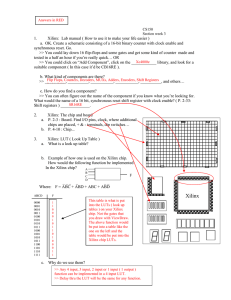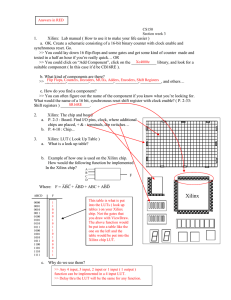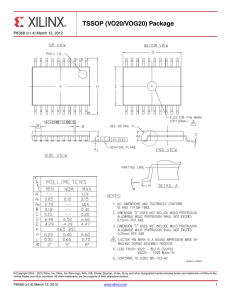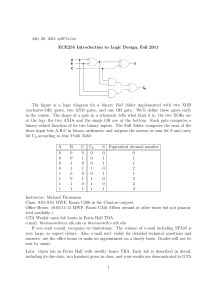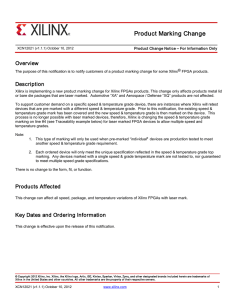Week3b Section.doc
advertisement
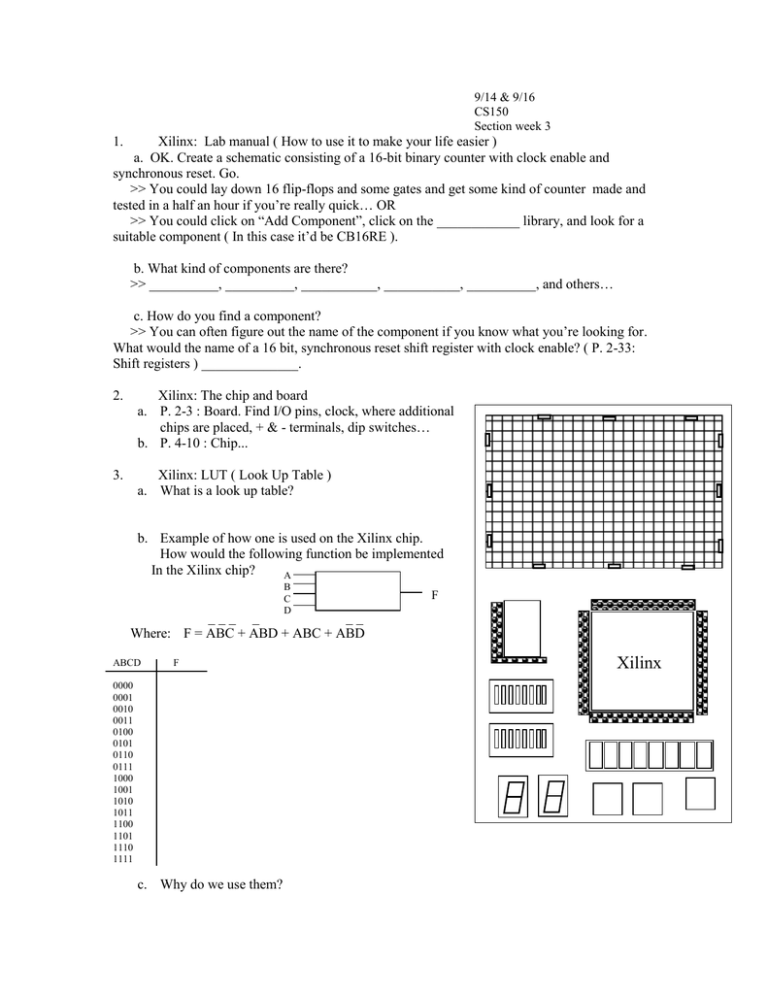
9/14 & 9/16 CS150 Section week 3 1. Xilinx: Lab manual ( How to use it to make your life easier ) a. OK. Create a schematic consisting of a 16-bit binary counter with clock enable and synchronous reset. Go. >> You could lay down 16 flip-flops and some gates and get some kind of counter made and tested in a half an hour if you’re really quick… OR >> You could click on “Add Component”, click on the ____________ library, and look for a suitable component ( In this case it’d be CB16RE ). b. What kind of components are there? >> __________, __________, ___________, ___________, __________, and others… c. How do you find a component? >> You can often figure out the name of the component if you know what you’re looking for. What would the name of a 16 bit, synchronous reset shift register with clock enable? ( P. 2-33: Shift registers ) ______________. 2. Xilinx: The chip and board a. P. 2-3 : Board. Find I/O pins, clock, where additional chips are placed, + & - terminals, dip switches… b. P. 4-10 : Chip... 3. Xilinx: LUT ( Look Up Table ) a. What is a look up table? b. Example of how one is used on the Xilinx chip. How would the following function be implemented In the Xilinx chip? A B C D F ___ _ __ Where: F = ABC + ABD + ABC + ABD ABCD F 0000 0001 0010 0011 0100 0101 0110 0111 1000 1001 1010 1011 1100 1101 1110 1111 c. Why do we use them? Xilinx FSMs: Using a decoder for implementing logic… ( Kinda like a LUT… ) a. What’s a 3:8 decoder? 4. ABC 000 001 010 011 100 101 110 111 01234567 10000000 01000000 00100000 00010000 00001000 00000100 00000010 00000001 0 1 2 3 4 5 6 7 A B C c. Use an 3:8 decoder and a single gate ( you can use bubbles ) to implement the following circuit’s output and NSD. ( Note: This circuit uses a 4 state FSM. ) IN 0 0 0 0 1 1 1 1 PS0 PS1 OUT NS1 NS0 0 0 0 1 0 0 1 1 1 1 1 0 1 1 0 1 1 0 0 0 0 0 0 1 0 0 1 0 1 0 1 0 0 0 1 1 1 1 1 0 0 1 2 3 4 5 6 7 IN PS0 PS1 NS1 OUT NS0 5. Serial to parallel converter ( Based on F97 HW #3, problem #3 ) Design a system which can convert 4 serial input bits ( SerialData ) to an 4 bit parallel output. In the final circuit you should use a 4 bit shift register and a 2 bit counter from the Xilinx library and any other necessary logic. The serial data comes in MSB first. Circuit timing is described in the timing diagram below. CLK SerialData Done Start DataOut[3:0] Clk ? ? Bit3 Bit2 Counter ? ? 0 1 2 3 0 1 DataOut0 DataOut1 DataOut2 DataOut3 ?0 ?1 ?2 ?3 ?0 ?1 ?2 ?3 ?0 ?1 ?2 ?3 SD3 ?0 ?1 ?2 SD2 SD3 ?0 ?1 SD1 SD2 SD3 ?0 SD0 SD1 SD2 SD3 SD0 SD1 SD2 SD3 Wait ? Wait ? Shift Run Shift Run Shift Full Wait Run Wait Run SerialData Bit1 Bit0 ? ? ? 4 Start Done FSM1 State FSM2 State Shift Run


